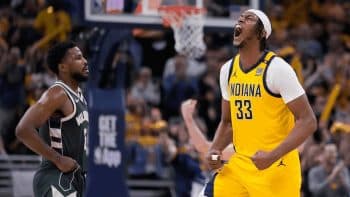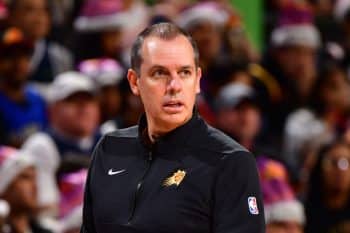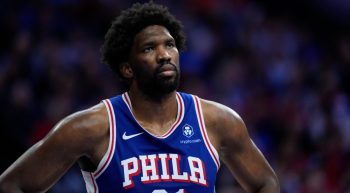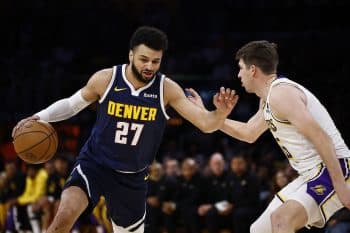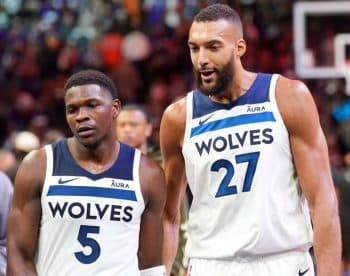NBA
How The Houston Rockets Built A Top-5 Defense

Key Highlights
- After ranking 27th or worst the past three years, the Rockets are third in defensive rating (107.4)
- During their six-game winning streak, they lead the league in defensive rating (102.7)
- Only seven teams allow a smaller rate of shots at the rim than Houston
Over the past two seasons, the Houston Rockets’ sixth win of the year didn’t come until the first week of December when they were already toiling away at 10 games under .500. This season, the Rockets’ sixth win of the year came during the second week of November in a thrilling 107-104 victory over the defending champion Denver Nuggets.
Houston hasn’t lost this month. At 6-3, it’s fourth in the Western Conference and touts a winning record for the first time since Feb. 4, 2021. Prior to this stretch, the Rockets hadn’t been at least three games over .500 since Aug. 14, 2020 — when James Harden was still donning Houston red and dazzling with slippery passing and snappy stepback triples.
The Rockets’ early success is a stark change from the past three years of downtrodden seasons yielding top-five picks. The success is a direct result from a busy spring and summer. Namely, Houston hired Ime Udoka as head coach and signed impactful veterans such as Fred VanVleet and Dillon Brooks aiming to usher in a new era of prosperity.
As one of five teams residing among the top 10 in offensive and defensive rating, the Rockets are playing eclectic basketball. Their ninth-raked offense thrives behind Alperen Şengün and his two-man game with VanVleet. Their third-ranked defense is among the league’s stingiest, anchored by VanVleet and Brooks, and complemented by efforts from the likes of Jae’Sean Tate, Jeff Green and Aaron Holiday.
What Makes The Rockets’ Defense So Good?
Separate from any sort of scheme or specific skills, Houston’s defensive superlative is its physicality. VanVleet, Brooks, Tate, Green, Holiday, Şengün, Tari Eason and Jock Landale all embrace physicality. They’re strong and combative. They put opposing offenses on their heels.
When Şengün or Landale are playing center, the Rockets generally switch 1-4 and keep the big man in drop coverage or near the level. When Green is the center, they switch 1-5. That’s not a unique coverage. Most teams around the league switch 1-4 and will go 1-5 in small-ball units. What distinguishes this group its aggressive pickup points and connectivity.
Whereas many teams and players step laterally or backward under screens to switch, the Rockets step up. They do not stroll into a switch and wait to respond to whatever their assignment does. They attack it.
Yet they’re also cognizant of potential mismatches and do not automatically switch every screen. They’re selective. They all gesture and talk to execute rotations, especially if someone ends up a step behind or reveals a crease. These are traits that rendered the 2021-22 Boston Celtics an elite defense. It seems Udoka’s quickly instilled them again with a new roster.
Because of Şengün’s shortcomings as an interior defender — lack of length and vertical explosion — Houston adheres to a no-middle philosophy predicated upon limiting touches in the paint and shots at the rim. It denies off the ball, will top-lock screens and shades tons of help in the gaps, particularly around the nail (middle of the free-throw line).
As such, those in-you-grill, on-your-hip pickup points are vital. Teams cannot have a moment to survey the floor and find an opening. Offense typically wins out because it’s the proactive side of the ball. It does something and a defense counters. Houston inverts the dynamic.
Aggressive isn’t a synonym for daring as is often conflated. The Rockets are 13th in opposing turnover rate, per Cleaning the Glass. They do not boldly fly into passing lanes or risk breaking their defensive shell. They load the gaps, recover to their assignment, maintain their principles and win possessions.
The pressure doesn’t always begin in the half-court either. Holiday lurks as a pesky one-man press, bothering ball-handlers down the floor, shortening the shot clock and setting the tone. The versatility from Brooks, VanVleet and Tate is another linchpin. All of them are not only capable defending three (or more positions), they’re also equipped to fluidly navigate screens, blow up handoffs, chase around off-ball scorers and bang in the post.
Shaking free of them is akin to getting out of a finger trap: the harder you try, the trickier it becomes. They’ve been masterful this season as the foundation of a top-five defense.
To this point, Houston’s philosophy is working. It allows the eighth-fewest rate of shots around the rim (30.8 percent), yet ranks 27th in opposing field goal percentage at the rim (69.6 percent). If teams get to the cup, they are flourishing. But they’re not venturing there all that commonly.
This refusal to concede space in the paint extends to pick-and-roll coverage. The Rockets will ice ball-screens to push initiators away from the middle. They prominently station help at the nail to dissuade pocket passes or drives. Weakside defenders are primed to tag diving bigs. Someone is routinely in or near the paint before a roller has even transitioned out of their screen.
Again, Brooks’, VanVleet’s and Tate’s capacity to frustrate ball-handlers of varying statures is paramount. They blend strength and agility to fight over screens or neutralize them altogether. Tate’s been one of the absolute best reserves in the NBA this season, while VanVleet and Brooks are comfortably playing like above-average starters worthy of All-Defensive Team buzz. This is 69 seconds of torture chamber footage spearheaded by that trio.
Some of the Rockets’ dominance is probably a bit unsustainable. Opponents have converted a league-worst 31.9 percent of their threes (average is 36.3 percent). According to Cleaning the Glass, based on the location of the shots they’ve surrendered, their opposing effective field goal percentage is ninth (54.0); their actual opposing effective field goal percentage is fifth (51.9).
But that gulf isn’t ginormous. This looks like a sure-fire top-10 defense on film. Eason — one of the team’s foremost defenders and another rangy, lively wing stopper — has suited up for just three games. He’s rounding back into form coming off an injury. His full integration will invigorate the defense and elevate its ceiling.
The Rockets are good. It’s been a few years since that was the case. It is now, though, and isn’t likely to change the rest of the year. Their disciplined, rugged, synergistic defense is the biggest reason why.
